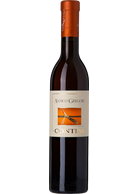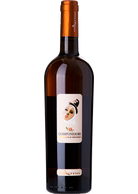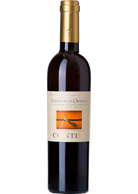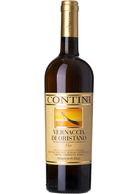Vernaccia di Oristano
According to many, the word "vernaccia" can be traced back to the name of Vernazza, an internationally renowned town in the Cinque Terre. The vine has been cited since the fourteenth century, and even appears in Dante's Purgatory. But like many grape names, such as trebbiano, "vernaccia" too should be seen as a generic etymology: "vernaccia" is the vernacular grape, i.e. "of the place", "local", a name therefore that is adaptable to many wine-growing realities and numerous grape varieties, both white and red.

Contini Vernaccia di Oristano Antico Gregori (0.37 L)


Vernaccia di Oristano
According to many, the word "vernaccia" can be traced back to the name of Vernazza, an internationally renowned town in the Cinque Terre. The vine has been cited since the fourteenth century, and even appears in Dante's Purgatory. But like many grape names, such as trebbiano, "vernaccia" too should be seen as a generic etymology: "vernaccia" is the vernacular grape, i.e. "of the place", "local", a name therefore that is adaptable to many wine-growing realities and numerous grape varieties, both white and red.
According to many, the Vernaccia of Oristano is native to the Tirso valley, according to others it is one of the many Sardinian vines of Spanish origin or, perhaps, imported by the Romans. However, considering the particular vinification and ageing techniques with which it is traditionally subjected, i.e. the oxidative resting in not-completely-filled barrels with the formation of the velo de flor, vernaccia di Oristano can be fully considered a product of the territory. Amber yellow, the resulting wine is intense and ethereal, oxidative, with notes of walnut husk, dried fruit, peat. The structure is robust and compact, warm and salty, with hints of tannins in the longer aged versions. An slow wine, certainly for meditation, it is however also vinified in a fresher version, with or without oxidation or velo de flor. It also expresses itself well as a white wine aperitif, although very sapid and with a good structure, or as a slightly sweet fresh white.
